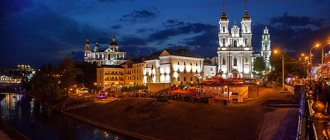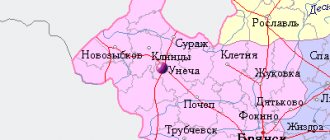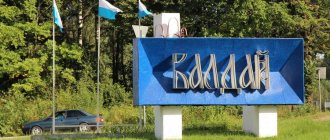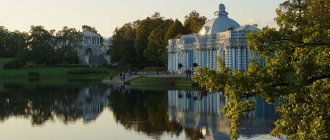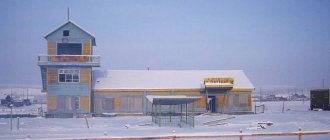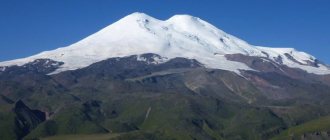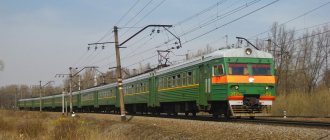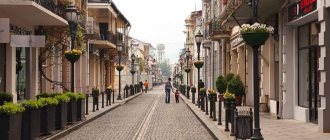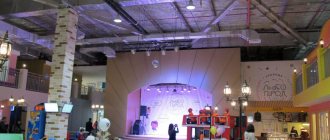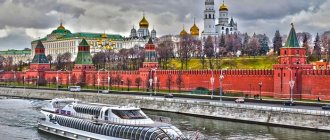Valdai is a treasure trove of natural and historical attractions. This is a land of stunning mountains and unique lakes, water streams full of fish, and rich fresh air. The city itself in the Novgorod region is one of the oldest in Russia and dates back about five centuries, according to historians. This is a place of bells and lakes, natural areas and mountain rivers. Tourists are attracted by the various attractions of Valdai. Some of them are not so famous, but that does not prevent them from being unique and amazing.
Lake Veljo
Valdai Lake is not the only water attraction in the region. One of the largest reservoirs in the region with an area of more than 25 kilometers is a real natural pearl. Its basin contains many large and small islands, and the depths are a paradise for anglers. The pike pools and abundance of bream deserve special attention. The water of the lake is clean and suitable for drinking, because there is not a single industrial enterprise in the vicinity. Small villages in the north-west make up the entire civilization of these regions. The southeastern coast of the lake is wild and deserted.
Valdai monastery
Not far from Valdai is the Iversky Monastery, which is located on Selvitsky Island in Lake Valdai. The construction of the monastery was initiated by Patriarch Nikon in the summer of 1653. Tsar Alexei Mikhailovich transferred dozens of villages to the monastery, including the village of Valdai. The Iversky Monastery was one of the largest landowners - in 1764 it owned about 7 thousand serfs and 4 thousand acres of arable land.
At first the monastery had five churches - the Assumption Cathedral of the 17th century, the Epiphany Church, the Church of the Descent of the Holy Spirit, the Church of St. James of Borovichi, the Church of Archangel Michael and the Church of St. Philip, Metropolitan of Moscow. The monastery was surrounded by log fortress walls with ten towers. But then they were rebuilt, the walls became stone, and the number of towers was reduced to five. The total length of the walls was about a thousand meters!
Iversky Monastery
The monks, immigrants from Belarus, brought with them a printing house, which became the first in the Russian province. Craftsmen arrived from the Dnieper cities of Orsha, Kopys and Mstislavl and started producing stove tiles. The ceramic workshop existed for about fifty years. Residents of Novgorod, Tver, and Pskov bought stove lining. Tiles were also used to decorate monastery buildings. The founders of the tile production were Ignat Maksimov and the famous master Stepan Ivanov, nicknamed Polubes.
The oldest building that has survived to this day is the Assumption Cathedral, built in 1656. This is one of the largest cathedrals of the 17th century in Russia, and for that time its appearance had many unusual things - a circular gallery, wide windows, and octagonal “drums” under the domes. The refectory is interesting, the vaults of which rest on one central pillar, and the building of the cells is decorated with stone carvings. The Iveron Icon of the Mother of God, brought here from Athos, was kept in the cathedral.
View of the monastery from Valdai
After the revolution, the territory of the monastery at various times housed: a labor artel, a historical and archival museum, workshops, a local history museum, a home for the disabled of the Great Patriotic War and a forest school for children with tuberculosis. The island was distinguished by its picturesque nature, so the buildings were eventually adapted into a recreation center. Only in 1991 the monastery was returned to the Novgorod diocese. The restoration was completed in 2007.
Now the monastery operates a small museum, a pilgrimage center and a hotel. The island offers a picturesque view of the lake and the city of Valdai, but an even more beautiful view opens from the city embankment of Valdai to the island, where the churches of the Iversky Monastery shine with golden domes. “All this is beauty, vigorous beauty,” wrote Nicholas Roerich about this place.
Nature reserves "Polistovsky" and "Rdeisky"
The Valdai Hills are a unique natural place. The marsh systems on hand Polist and Lovat within the Novgorod and Pskov regions are included in the list of UNESCO-protected natural wonders. These places are equipped into two reserves. Tourists mainly pay attention to the large national parks of Valdai, but the value of the reserves is no less significant: there are rare species of birds listed in the Red Book, more than 30 species of mammals, unique flora and pristine beauty of wild nature.
Ant Island
Tourists often ignore this island, focusing on the nearby Iversky Monastery. But this natural attraction is worth a look. Ant Island is a body of water within a body of water. On the island there is Lake Glukhoe, the depth of which exceeds Valdai. The island is named so because of the tall anthills that are visible from afar. Legends say that Ant was once called the Dark Island, and a black sorcerer lived on its territory.
Photos of Valdai
Valdai: Attractions Photos Weather Map Hotels
Countries of the WorldRussiaCitiesValdai
1
This collection contains 83 photographs of Valdai, its views, houses and attractions, which were taken by local residents, tourists and photographers. The most photographed places in Valdai are the Valdai Iversky Monastery and the Museum of Bells. In order to view a photo album of a specific attraction, you need to go to the appropriate section on the object’s page. All photos of Russian cities and attractions are presented in high quality, we hope that this will help you get to know them better.
VKontakte facebook twitter
Photos of other Russian cities Photos of Moscow Photos of St. Petersburg Photos of Sochi Photos of Tula Photos of Yaroslavl Photos of Vladimir Photos of Voronezh Photos of Yekaterinburg Photos of Ryazan Photos of Tver Photos of Sevastopol Photos of Dmitrov Photos of Rostov the Great Photos of Ivanovo Photos of Orel Photos of Nakhodka Photos of Belgorod Photos of Bryansk Photos of Volgograd Photos of Kazan Photos of Kaluga Photos Krasnodar Photo Lipetsk Photo Nizhny Novgorod Photo Penza Photo Samara Photo Saratov Photo Smolensk Photo Tambov Photo Chelyabinsk Photo Anapa Photo Kolomna Photo Yuzhno-Sakhalinsk Photo Vladivostok Photo Grozny Photo Izhevsk Photo Kostroma Photo Kursk Photo Omsk Photo Perm Photo Rostov-on-Don Photo Ufa Photo Cheboksary Photo Chita Photo Kerch Photo Pushkin Photo Sergiev Posad Photo Murom Photo Yeisk Photo Abakan Photo Saransk Photo Dolgoprudny Photo Balashikha Photo Irkutsk Photo Kirov Photo Novosibirsk Photo Orenburg Photo Podolsk Photo Ulyanovsk Photo Essentuki Photo Magadan Photo Alushta Photo Mytishchi Photo Krasnoyarsk Photo Togliatti Photo Khabarovsk Photo Myshkin Photo Kaliningrad Photo Rybinsk Photo Stavropol Photo Suzdal Photo Tomsk Photo Tyumen Photo Pyatigorsk Photo Ukhta Photo Astrakhan Photo Blagoveshchensk Photo Murmansk Photo Novorossiysk Photo Pskov Photo Ulan-Ude Photo Gelendzhik Photo Uglich Photo Pitkyaranta Photo Arkhangelsk Photo Barnaul Photo Vologda Photo Yoshkar-Ola Photo Kemerovo Photo Kurgan Photo Magnitogorsk Photo Nalchik Photo Surgut Photo Taganrog Photo Yakutsk Photo Simferopol Photo Balakovo Photo Svetlogorsk Photo Ordzhonikidze Photo Zheleznovodsk Photo Engels Photo Komsomolsk-on-Amur Photo Armavir Photo Vladikavkaz Photo Makhachkala Photo Norilsk Photo Tuapse Photo Yalta Photo Torzhok Photo Ples Photo Alexandrov Photo Volgodonsk Photo Angarsk Photo Bratsk Photo Naberezhnye Chelny Photo Novokuznetsk Photo Syzran Photo Cherepovets Photo Sudak Photo Veliky Novgorod Photo Kislovodsk Photo Kalyazin Photo Mineralnye Vody Photo Kovrov Photo Belokurikha Photo Pereslavl-Zalessky Photo Sortavala Photo Derbent Photo Petrozavodsk Photo Syktyvkar Photo Feodosia Photo Novocherkassk Photo Vyborg Photo Kozelsk Photo Elista Photo Balaklava Photo Foros Photo Nizhnevartovsk Photo Petropavlovsk-Kamchatsky Photo Pechory Photo Salekhard Photo Tobolsk Photo Valdai Photo Yuryev-Polsky Photo Nizhny Tagil Photo Severodvinsk Photo Anadyr Photo Zadonsk Photo Khanty-Mansiysk Photo Priozersk Photo Vorkuta Photo Temryuk Photo Dzerzhinsk Photo Kirzhach Photo Gatchina Photo Kronstadt Photo Elabuga photo of the great Ustyug photo Maykop photo of the old Russa photo miass photo Hasavyurt photo of Shlisselburg photo Alupka photo bachisaray photo of Peterhof photo of the great Luke photo of the Baltiysk photo of Nevyansk photo of Nevyansk photo of Nevyansk photo Kidekshi photo Verkhoturye photo of the Ostashkovsk photo of Chernyakhovsk photo of the Ussuriyska photo Photo of Sterlitamak Photo of Zelenogradsk Photo of Neman Photo of Sovetsk Photo of Polessk Photo of Severomorsk Photo of Roslavl
Valdai
Description Attractions Photo Weather Map Hotels
See also: Photos of Somalia, Sights of Kazakhstan, Cities of Bolivia, Russia, Kuching, Mostar, Ischigualasto, San Agustin Archaeological Park
Lake Linen
The reservoir, located on the northern slope of the Valdai Ridge, is a natural monument of regional significance, and also has cultural and historical value. This glacial lake is covered with mosses and is located in a remote area, preserving pristine natural beauty. Linen is remarkable in that L.N. Tolstoy and I.I. Levitan lived here for some time.
A trip to ancient Valdai is an acquaintance with the history, culture and amazing nature of the region, which can bring many unexpected impressions.
Between the Volga and the Baltic
The administrative center of this picturesque area is the city of Valdai. It is located on the shores of Lake Valdai, 140 kilometers from Veliky Novgorod. Nearby there is a federal highway connecting Moscow and St. Petersburg. That is why at different times many famous people passed through the city - Pushkin, Nekrasov, Radishchev. Valdai is located on the 386th kilometer of the M-10 highway. The population of the city does not exceed 14 thousand people.
Valdai is the administrative center of the picturesque Valdai region
The Valdai Upland is part of the Russian Plain. The elevation changes range from 150 to 250 meters. The highest point is considered to be a mountain 346 meters high. The elevation plays the role of a watershed between the Volga and Baltic basins. It’s hard to believe, but such giant rivers as the Volga, Dnieper, Western Dvina, Msta, Tvertsa and others originate from here.
The top of the watershed, located at the highest point, is called “Top of Valdai”. In this place originate the Skomoroshka River, which belongs to the Caspian Sea basin, and three tributaries of the Tsna - the Krasenka, Karavay rivers and the Syutaevsky stream, which belong to the Baltic basin. The picturesque landscape of the area was formed by glaciers in ancient times.
